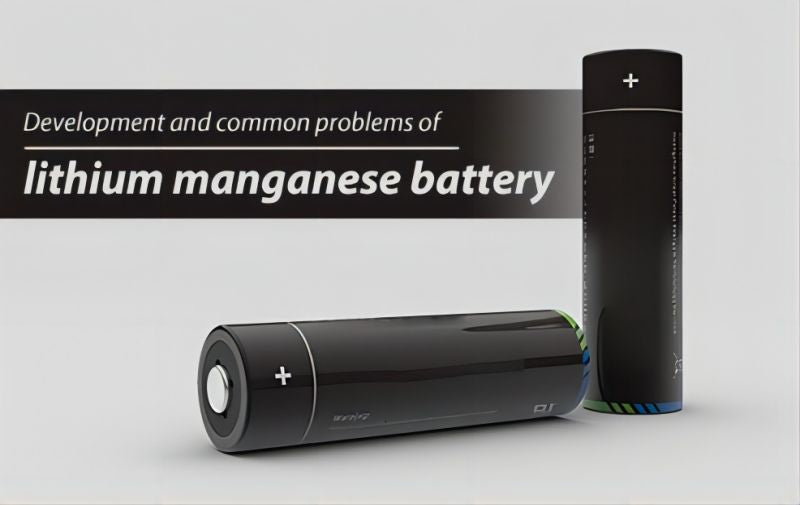
Main content:
- What is the cathode material of lithium manganese battery composed of
- Charging and discharging of typical lithium-rich materials
- Progress in research on cathode materials for lithium manganese batteries
- Energy density of cathode materials for lithium manganese batteries
- Advantages of cathode materials for lithium manganese battery
- The development of lithium manganese batteries still takes time
- New hope of lithium manganese battery materials
Lithium manganese battery cathode material is a lithium-ion battery cathode materials. In recent years, the penetration rate of the world's new energy vehicle market has increased rapidly, and the demand for power batteries is strong. Compared with the common cathode materials for lithium-ion batteries at this stage, lithium manganese battery cathode materials have high specific capacity and strong battery life, which has great potential for development.
The next-generation new energy vehicle lithium-ion battery cathode material. Lithium manganese battery cathode material has a high discharge specific capacity, which is one of the products with the highest discharge specific capacity among known lithium-ion battery cathode materials. It is much higher than the common ternary materials and lithium iron phosphate cathode materials in the market.
Moreover, the content of cobalt and nickel in the positive electrode material of lithium manganese battery is only about 30% of that of ternary materials, and it can also contain no cobalt to further reduce its cost. Its safety performance is also higher than that of ternary material batteries, so it has become a very potential Next-generation cathode materials for lithium-ion batteries.
What is the cathode material of lithium manganese battery composed of
Lithium manganese battery cathode materials have the advantages of high discharge specific capacity, high discharge voltage, high energy density, low cost, high safety, long cycle life, etc., and have great market potential in the future. Some scientists have conducted research on key issues such as reducing the first irreversible capacity of lithium manganese battery cathode materials, voltage decay and oxygen evolution during cycling, and achieved a series of research results.

Scientists summarized the latest progress in the research on cathode materials for lithium manganese batteries, and explained the characteristics and behaviors of lithium manganese battery materials from different levels. China's lithium manganese battery cathode material technology research is constantly deepening, and when the existing bottleneck problem is solved, it is expected to achieve industrial development.
The lithium manganese battery material is LiMnO·LiMO, a composite positive electrode material based on LiMnO (M is usually Ni, Co, Mn, or a binary or ternary layered material of Ni, Co, Mn). Compared with LiMnO4 or pure layered LiMnO cathode materials, such materials have a higher Li/M molar ratio and are generally called layered lithium manganese battery compounds. Researchers have successively studied different systems such as LiMnO·LiCoO, Li2MnO·LiNiCoO, xLiMnO·(1-x)LiNi.Mn.O, xLiMnO·(1-x)LiNi/Co/Mn/O and so on.
Charging and discharging of typical lithium-rich materials
In the charging process of lithium manganese battery materials, when the first charging voltage is less than 4.5V, it corresponds to the charging process of the layered material LiMO, and the plateau of charging greater than 4.5V indicates a new charging and discharging mechanism, corresponding to the charging process of LiMnO. The charging mechanism of LiMO has been discussed above, and the charging mechanism of LiMnO will be mainly discussed below.
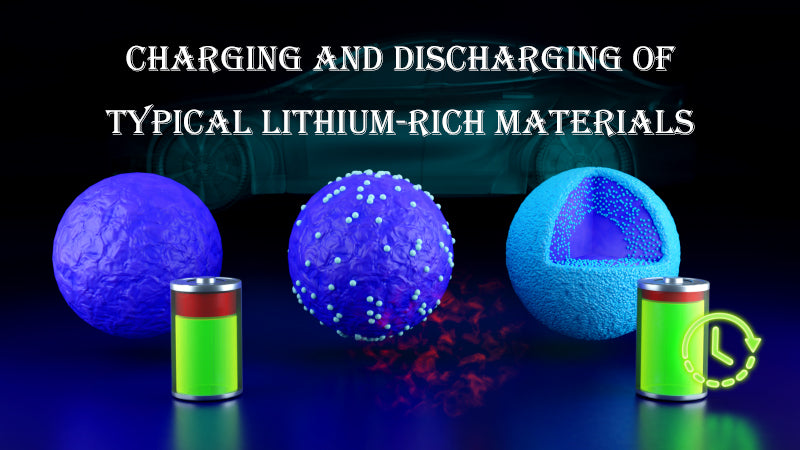
The charging mechanism of LiMnO mainly includes: oxygen desorption, proton exchange and a mixture of the two mechanisms. According to the mechanism of oxygen extraction, after charging above 4.5V, Li in LiMnO escapes from the lattice, while O leaves the host lattice and is oxidized, which is equivalent to the extraction of LiO and leaving oxygen vacancies.
This includes two steps of electrochemical process and chemical process: The electrochemical process is that LiMnO desorbs Li and loses electrons at the same time to generate intermediate state Mn. The chemical process is the subsequent release of oxygen from unstable Mn. The proton exchange mechanism considers that LiMnO undergoes a displacement reaction with the H decomposed from the electrolyte. One point of view is that the oxygen ions in LiMnO have not escaped from the lattice.
Progress in research on cathode materials for lithium manganese batteries
According to reports, LLOs is a new type of cathode material for lithium batteries, which can undergo reversible redox reactions between anions and cations, and has a discharge specific capacity much higher than that of high-voltage lithium cobaltate and high-nickel ternary cathode materials. Density lithium batteries, especially all-solid-state lithium metal battery, have great application potential. At present, the redox reaction of anionic oxygen will lead to the generation of non-steady-state O 2p holes and oxygen in LLOs, which seriously reduces the battery stability, cycle life and safety performance, and becomes a bottleneck restricting the development of high specific energy and high safety solid-state battery technology.
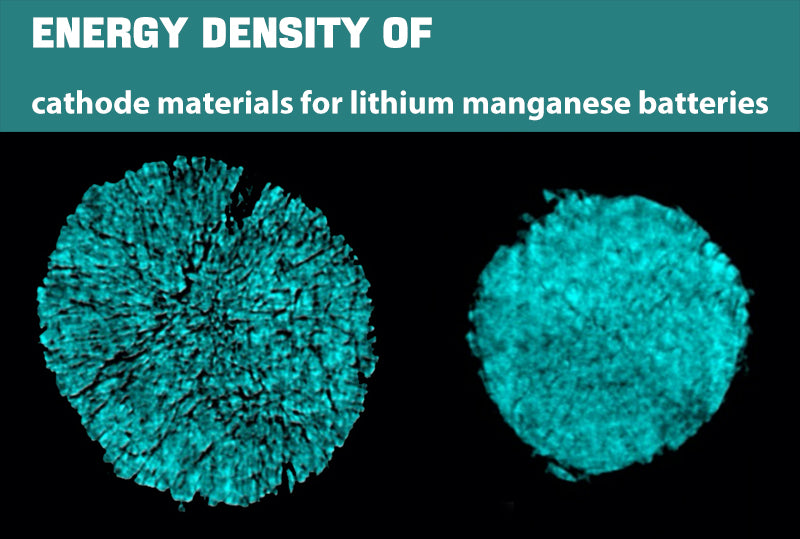
Energy density of cathode materials for lithium manganese batteries
Among the known positive electrode materials, the discharge specific capacity of lithium manganese battery positive electrode materials is more than 250 mAh/g, which is almost twice the actual capacity of commercial positive electrode materials; at the same time, this material is based on cheaper manganese Mainly, the precious metal content is less, and compared with the commonly used lithium cobalt oxide and nickel-cobalt manganese ternary cathode materials, it is not only low in cost, but also good in safety.
Therefore, the cathode material of lithium manganese batteries is regarded as the ideal choice for the next generation of lithium power batteries, and is the key technology for lithium batteries to break through 400 Wh/kg, or even 500 Wh/kg. Lithium-rich cathode materials, such as lithium manganese battery cathode materials (xLi2MnO3(1–x)LiTMO2, TM = Ni, Mn, Co, etc.), have extremely high theoretical specific capacity (>350 mAh/g) and reversible specific capacity ( >250 mAh/g), considered to be one of the most promising cathode materials for next-generation lithium-ion batteries.
The source of its high capacity is not only the redox couple composed of transition metal ions (usually Ni2+/Ni4+, Co3+/Co4+, a small amount of Mn3+/Mn4+), but also the unique anion redox couple (O2-/O- /O2). In addition, the lithium manganese battery cathode material reduces the amount of expensive cobalt and nickel, effectively reducing production costs.
Advantages of cathode materials for lithium manganese battery
First, the transition metal layer of the lithium manganese battery contains lithium, and the transition metal layer of layered materials such as ternary lithium does not contain lithium. Second, the structure is equivalent to the lithium manganese battery combined with lithium manganese oxide and layered materials. It is presented in the form of layered metal oxides and has the inherent advantage of high discharge specific capacity. Its theoretical data can reach more than 300mAh/g.
Compared with The mainstream 200mAh/g level of ternary lithium has obvious advantages. Third, lithium manganese battery materials have inherent advantages in voltage, with a rated voltage of 4.5V (up to 4.7V-4.8V), while ternary lithium has a rated voltage of 3.7V (up to 4.2V-4.3V). Combining the above three points, the cathode material for lithium manganese batteries has long been an ideal choice for a new generation of cathode materials. In addition, at this stage, the amount of nickel and cobalt in the raw materials of lithium manganese batteries is much lower than that of ternary lithium.
In the future, it can even be free of cobalt, which becomes another electrochemical route in the concept of cobalt-free batteries. Compared with ternary lithium in terms of cost, The lithium cathode material is reduced by more than 40%, and after reducing the amount of nickel metal, the stability and safety of the battery are fundamentally guaranteed.
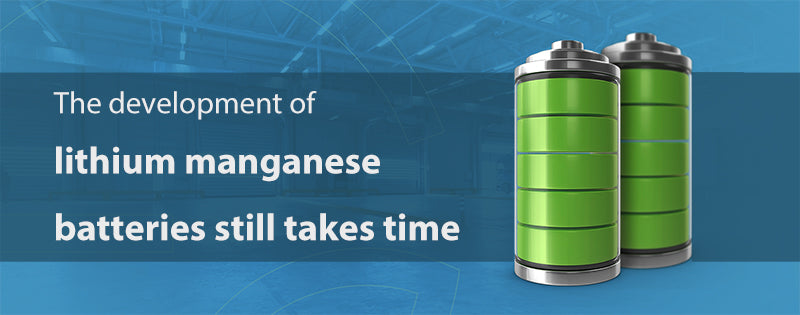
The development of lithium manganese batteries still takes time
Although the positive electrode material of lithium manganese batteries has an absolute advantage in discharge specific capacity, the following key technical problems must be solved in order to apply it to lithium power batteries: one is to reduce the first irreversible capacity loss; the other is to improve the rate performance and cycle life. The third is to suppress the voltage decay of the cycling process.
At present, there are many means to solve this material problem: coating, acid treatment, doping, pre-cycle, heat treatment, and liquid or gas phase post-treatment all have certain effects on improving the electrochemical performance of lithium manganese battery materials, but different modifications The improvement effects produced by different methods will be different. At present, a single modification method still cannot fundamentally solve the problems faced by lithium manganese battery materials.
Therefore, it is necessary to use a combination of multiple modification methods and develop New structures (such as single crystal structure, composite structure, composition control and gradient structure, etc.) solve the problems faced by lithium manganese battery materials. In addition, the structure and composition design of the precursor is also very important. It is necessary to consider not only the capacity of the material, but also the increase in density to achieve a "seesaw" balance between capacity and density. Judging from the demand of downstream battery factories and car factories, cobalt-free is the future development trend.
This year, Dangsheng Technology released a new type of lithium manganese battery material, which solves seven key problems and exhibits high capacity and cycle stability. The successful application of lithium manganese battery materials also requires the development of a stable electrolyte system that matches it. The downstream will work together to continuously innovate and achieve a win-win situation.
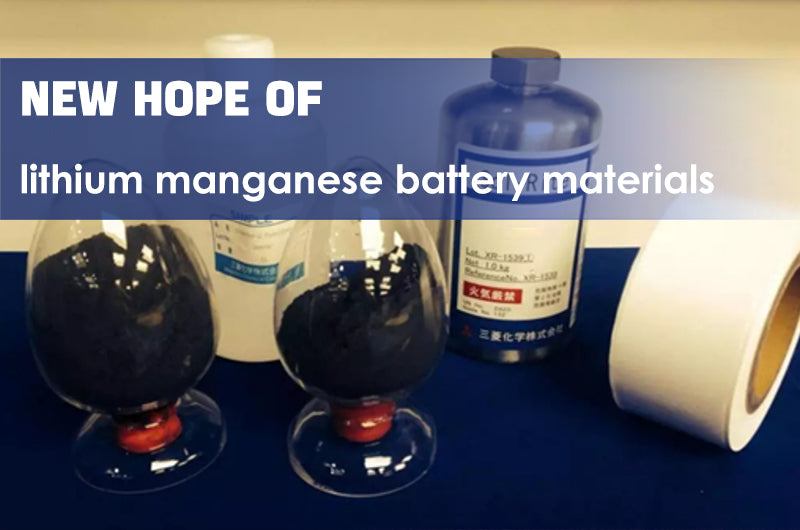
New hope of lithium manganese battery materials
Based on the non-constant temperature sintering technology to help the stability of LLOs anion oxygen, realize the excellent cycle performance of lithium batteries Reduction reaction, which has a discharge specific capacity (≥ 280 mAh g-1) much higher than that of high-voltage lithium cobaltate and high-nickel ternary cathode materials. It has great application potential when it exceeds 550 Wh kg-1). At present, due to the redox reaction of anionic oxygen, LLOs will lead to the generation of unsteady O2p holes and O2, which seriously reduces the battery stability, cycle life and safety performance, and has become a bottleneck problem restricting the development of high specific energy and high safety solid-state battery technology.
In addition, the microscopic mechanism of the rapid performance degradation of LLOs materials in all-solid-state batteries has not yet been explored. Therefore, it is an important prerequisite to promote the development of LLOs materials to develop innovative material preparation technologies to solve their bottleneck problems, and to explore advanced characterization technologies to clarify the key scientific issues of the microscopic mechanism of performance degradation of lithium manganese batteries for all-solid-state batteries.
Traditional lithium-ion battery cathode materials (such as LiCoO2, LiFePO4, ternary layered, etc.) realize chemical energy storage through the oxidation and reduction of metal cations, which can no longer meet the increasing demand for battery high energy density in social development. Lithium manganese battery layered cathode material (Li- and Mn-rich, LMR) is intercalated between two LiTMO2 (TM = Ni, Co, Mn) phases and Li2MnO3 phases in the material, and its transition metal layer stores and deintercalates lithium.
The ions increase the lithium storage capacity, and the redox of metal cations and oxygen anions can be used simultaneously, thus greatly improving the energy density of the positive electrode material, but its inherent irreversible capacity loss in the first week and continuous voltage decay lead to constant battery energy. The loss hinders the large-scale industrial application of this material.
Related article: high nickel ternary cathode, lithium battery capacity loss, 18650 rechargeable battery